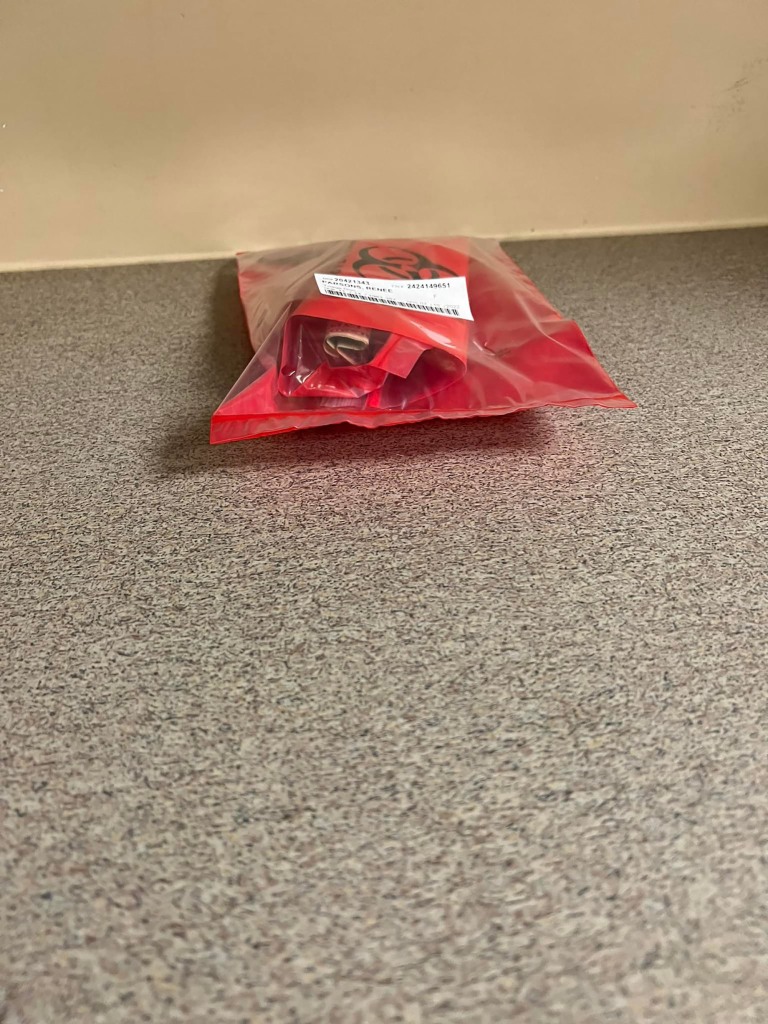Experts debunk claim of overdose by fentanyl-laced dollar
Viral claims of spontaneous — and unsubstantiated — overdoses are getting under their skin.
Experts are casting doubts on rampant reports of people OD-ing by simply touching fentanyl — including an alarming case this week in which a Kentucky woman was hospitalized after picking up a dollar she later claimed was laced with the narcotic.
Dr. Caleb Alexander, an epidemiologist with the Johns Hopkins Bloomberg School of Public Health, told Fox News that such cases are “incredibly rare,” akin to “lightning striking.”
“It would be incredibly unusual for somebody to touch something that was contaminated with fentanyl and subsequently to experience a really serious, adverse effect from it,” he explained.
In the aforementioned incident, which has gained national attention, Kentucky’s Renee Parsons claimed she’d collapsed mere minutes after picking up a dollar at a Tennessee McDonald’s while traveling to Dallas with her family.
“My body went completely numb, I could barely talk and I could barely breathe,” wrote Parsons, who claimed that she subsequently lost consciousness.
Her husband Justin drove his imperiled wife to a nearby hospital, where her symptoms finally abated after four hours. She was then discharged on an accidental drug overdose.
Both Parsons and her husband postulated that the dollar picked up was contaminated with fentanyl, which caused her to suffer an adverse reaction.
However, experts believe it’s highly unlikely that was the case.
According to a Metro Nashville police officer who was called to the ER, Parsons decidedly wasn’t exposed to fentanyl as she didn’t require Narcan to be revived while preliminary tests didn’t reveal any drugs in her system. They also didn’t find any drug residue on the bill.
Dr. Rebecca Donald, a fentanyl expert at Vanderbilt University Medical Center, explained that even if the tender was tainted with said narcotic, it would require more than skin contact to cause an overdose.
“It is much more likely for her to have a reaction if she had inadvertently rubbed her nose and exposed that drug to some of the blood vessels in her nose or licked her fingers or rubbed her eyes,” she explained.
Dr. Gina Dahlem, a professor at the University of Michigan School of Nursing, told the Daily Mail that it would take far higher doses and hours of time for a person to overdose — it wouldn’t have happened suddenly like in the aforementioned case.

Parsons wasn’t the first person to claim she suffered an extreme reaction from skin-to-skin contact with fentanyl. Over the past few years, reports have surfaced of overdoses involving US law enforcement, including a case last month in which a Kansas police officer collapsed to the ground and required several doses of Narcan after coming into contact with with a case of pills believed to harbor fentanyl.
However, as with Parsons’ case, these diagnoses have since been disputed.
“Fentanyl and its analogs are potent opioid receptor agonists [50 to 100 times more powerful than morphine], but the risk of clinically significant exposure to emergency responders is extremely low,” the the American College of Medical Toxicology wrote in a 2021 report. “To date, we have not seen reports of emergency responders developing signs or symptoms consistent with opioid toxicity from incidental contact with opioids.”
They said the main risk comes from ingestion or inhalation and that “incidental dermal absorption” is unlikely to cause an overdose.
According to the study, even if a person was covered in fentanyl patches — an anesthetic accessory used in hospitals — it would take a whopping 14 minutes to absorb 100 micrograms, one-twentieth of the amount it takes to overdose. This is especially shocking given that, unlike their street-grade counterpart, fentanyl patches are specifically designed to deliver the drug into the blood stream.

Unfortunately, misinformation regarding fentanyl overdoses runs rampant even in law enforcement circles. Following an uptick in opioid overdoses in 2016, the US Drug Enforcement Administration incorrectly warned the public that “just touching fentanyl” can cause life-threatening symptoms, including breathing problems and “cardiac arrest,” which usually occurs “within minutes of exposure,” per the ACMT study.
Meanwhile, last August, the San Diego County Sheriff’s Department published a since-deleted video showing one of their officers collapsing after allegedly coming into contact with the narcotic during a vehicle search.
The clip was subsequently discredited by medical experts. “This is very obviously not a fentanyl overdose to anyone who has actually seen one or knows how they work, and you should be ashamed of yourselves for advancing this disproven narrative that hurts people,” toxicology expert Dr. Ryan Marino tweeted at the time.
In a study published last month, experts wrote that “social media sharing of unconfirmed first responder overdoses after brief exposure to fentanyl may be contributing to an inappropriate risk perception of brief dermal fentanyl exposure.”
Dr. Alexander summed up the fentanyl hysteria as such: “Most people that are getting injured or unfortunately succumbing to fentanyl are taking it.”
“They’re either using an opioid or they’re using cocaine or another drug that happens to be contaminated with fentanyl — but they’re not just innocently touching a surface — a counter or a tabletop or something — and then experiencing an adverse effect from it,” he added.
Read the full article Here


